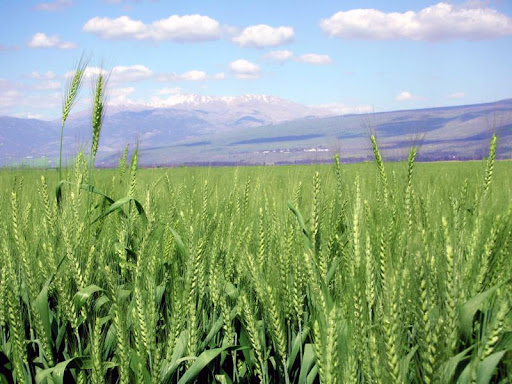Tuesday, February 8, 2011
Sri Lanka says rice losses at 35 percent
 COLOMBO, Feb 8 (Reuters) - Two rounds of flooding in Sri Lanka since January have destroyed at least 35 percent of the staple rice crop, the Agriculture Ministry said on Tuesday, raising the risk of food price inflation.
COLOMBO, Feb 8 (Reuters) - Two rounds of flooding in Sri Lanka since January have destroyed at least 35 percent of the staple rice crop, the Agriculture Ministry said on Tuesday, raising the risk of food price inflation.
Heavy monsoon flooding since mid-January has caused landslides and burst hundreds of dams and killed at least 57 people. In the latest round this week, rising water forced at least 193,700 people into temporary shelters.
The rice crop has taken a major beating, according to preliminary government surveys, but Asian rice traders said the impact on the global market will be minimal as the country has stocks and import volumes are expected to be small.
"On rough estimates, more than 300,000 hectares' have been completely destroyed so the total expected production is 1.75 million metric tonnes," Agriculture Ministry Secretary K.E Karunatilake, the ministry's top civil servant, told Reuters.
Total expected rice production this season had been 2.7 million metric tonnes (MT) from 739,000 hectares, he said.
Sri Lanka is usually self-sufficient in rice production, having produced 3.65 million metric tonnes in 2009 against an average annual consumption of 2.34 million MT, according to data from the central bank and Census and Statistics Department.
Last year it imported 52,000 tonnes of specialty rice. Despite self-sufficiency, politically influential traders are often accused of hoarding supplies.
The government as of now has 188,000 MT in stock, according to the Census and Statistics Department. It had no data on private stocks, but they have historically been larger than the government supply.
Current rice stocks and the potential for a larger crop in the May-September season "are likely to ease any prices pressures in 2011", the central bank said on Tuesday after holding rates steady and shrugging off inflation fears.
MARKET IMPACT SMALL
The end of a 25-year civil war in May 2009 has added about 169,000 hectares in the former war zone to Sri Lanka's twice-annual production, which the government has said will help mitigate any potential inflationary shocks. [ID:nSGE71703D]
"I do not see any major impact anywhere as Sri Lanka's crop size is relatively small. And the demand is also not big from there. Also, please remember that global rice supplies are going to increase by 3 percent this year," said Vijay Sethia, president of the All India Rice Exporters' Association.
Two government officials told Reuters that India would likely export rice via diplomatic channels if Sri Lanka needs it.
Sri Lanka plans to replant as quickly as possible, and after the first wave of floods in January sought World Food Programme assistance to acquire more fast-growing seed stocks.
"We are planning to get the replanting done by at least end of March but the biggest problem is that most of the seed paddy is also destroyed," Karunatilake said.
Although Sri Lanka has forecast inflation of 4 percent to 6 percent in 2011, the public has begun grumbling about high food prices, which are traditionally a politically sensitive issue in the Indian Ocean nation. [ID:nRISKLK]
"If the crop has been damaged they will definitely need to import rice, but it is a small market," said one Bangkok-based rice trader. "I don't think they will buy more than 100,000 tonnes. They will buy lower quality rice from Myanmar or Pakistan."
Global rice prices have remained largely stable despite food prices hitting a record high on fears of shrinking wheat and corn supplies.
Ample supplies from top rice exporters Thailand and Vietnam should keep prices in check through the first quarter, although stock-building by buyers like Bangladesh and Indonesia could push prices higher.
Benchmark Thai rice <RI-THWHB-P1> dropped 13 percent in 2010, while U.S. wheat <Wc1> and corn <Cc1> futures climbed around 50 percent as adverse weather hit key producing regions.
The world's second-largest rice exporter Vietnam was forecast to enjoy a bumper next crop, while top buyer the Philippines has said it would import between 1.0 million and 1.5 million tonnes in 2011, around half of last year's imports. (Additional reporting by Naveen Thukral in Singapore and Mayank Bhardwaj in New Delhi; Editing by Himani Sarkar)
(Source: http://www.trust.org/alertnet/news/sri-lanka-says-rice-losses-at-35-percent)

This post was written by: HaMienHoang (admin)
Click on PayPal buttons below to donate money to HaMienHoang:
Follow HaMienHoang on Twitter













0 Responses to “Sri Lanka says rice losses at 35 percent”
Post a Comment